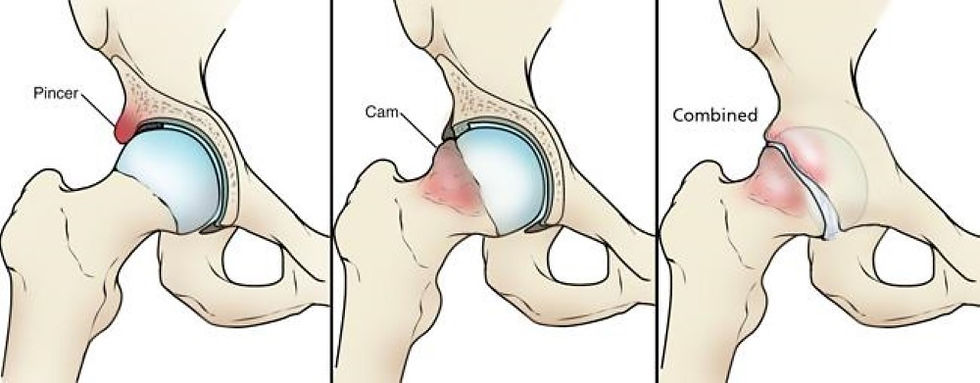Hip Pathology Vs Hip Pain: Are they connected?
- Sachin Bhat

- Jul 19, 2023
- 1 min read
A new study has just been completed looking into hip joint structure (using MRI) and hip symptoms over time, and determine if modifiable factors (e.g. cam morphology, hip contact force, muscle strength, or joint ROM)) can predict those who develop worse joint disease over time. A cohort of 184 footballers with longstanding (six months or longer) hip and/or groin pain, comparing to cohort of 62 activity-matched footballers who have had no hip or groin issues at all

Cam and Pincer lesions. Two potential types of hip impingements in footballers
Study Findings:
* Both the symptomatic and asymptomatic groups had cam lesions.
* In footballers with hip impingement - those with larger cam lesion, had worse pain, symptoms and self-reported functional impairment.
Lower Limb biomechanics in various tasks:
Very few differences in those with and without hip/groin pain
Males and Females with hip impingement move differently to each other, depending on the intensity of the task - For example, smaller knee flexion total ROM in females (with walking)
This suggests functional impairments are likely to be task- and sex-specific
In those with worse symptoms, glute may activity was similar in pattern to those with advanced hip OA
Summary
Whether you have a hip impingement or not, you may or may not have symptoms
However there is some evidence to suggest that that the size of the hip impingement may influence the level of pain
Note that this study is focused on footballers. Footballers are more likely to develop a hip impingement, due to the kicking required in their sport




Comments